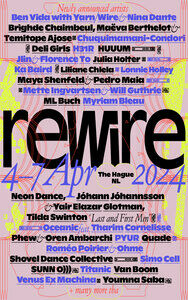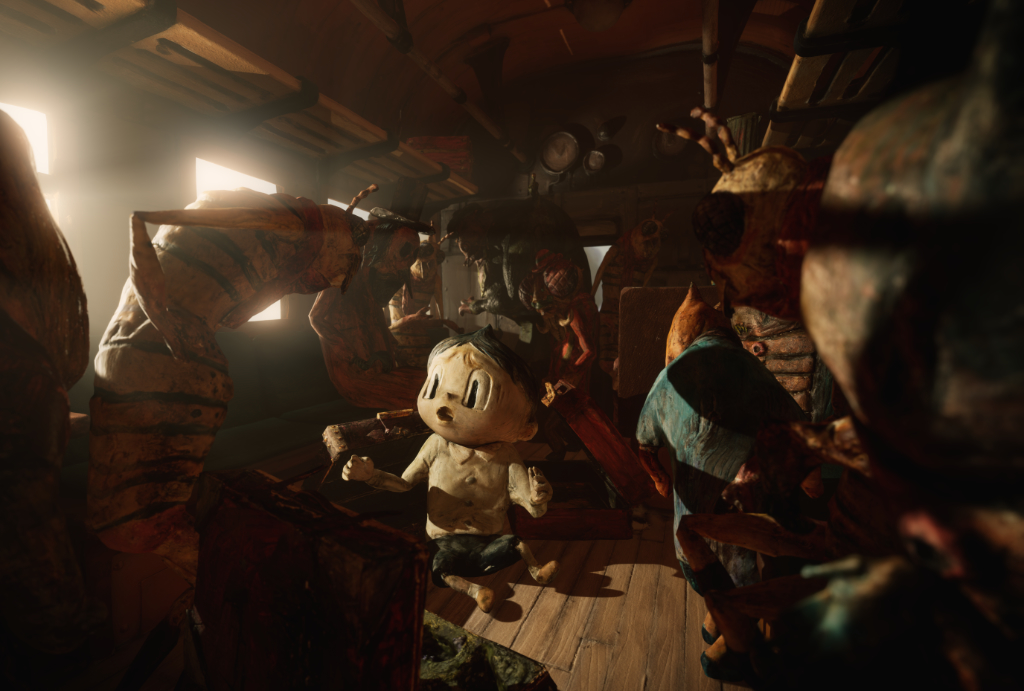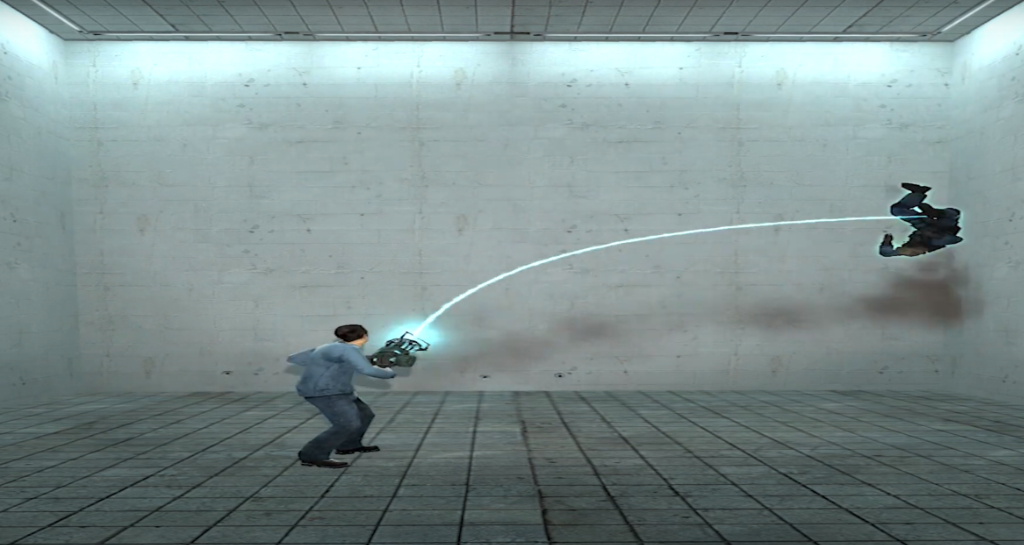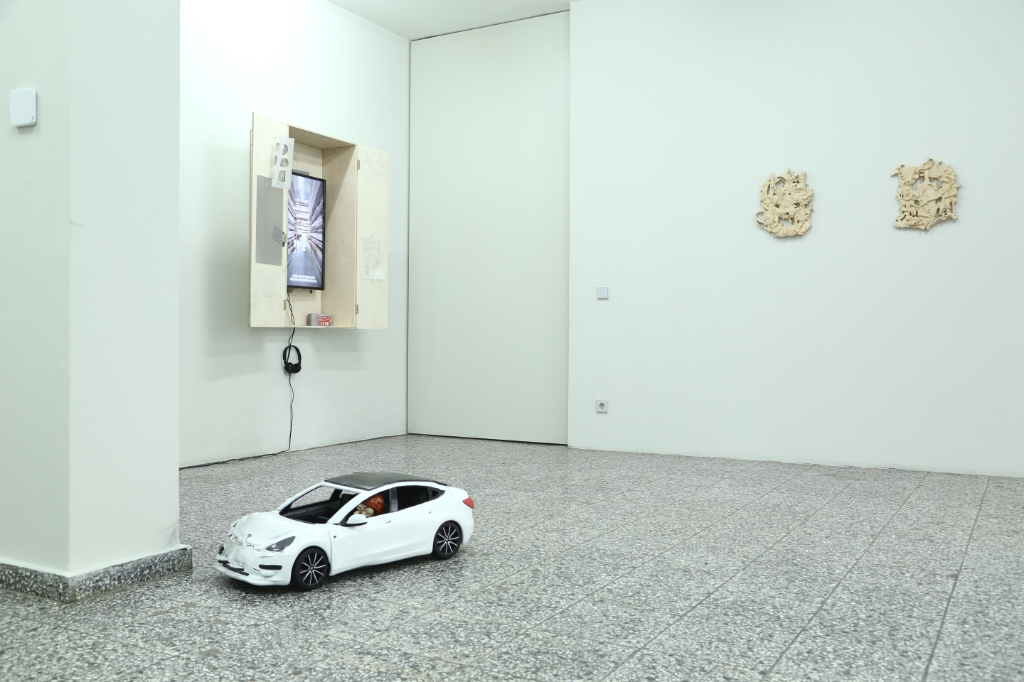Interview by Olya Karlovich
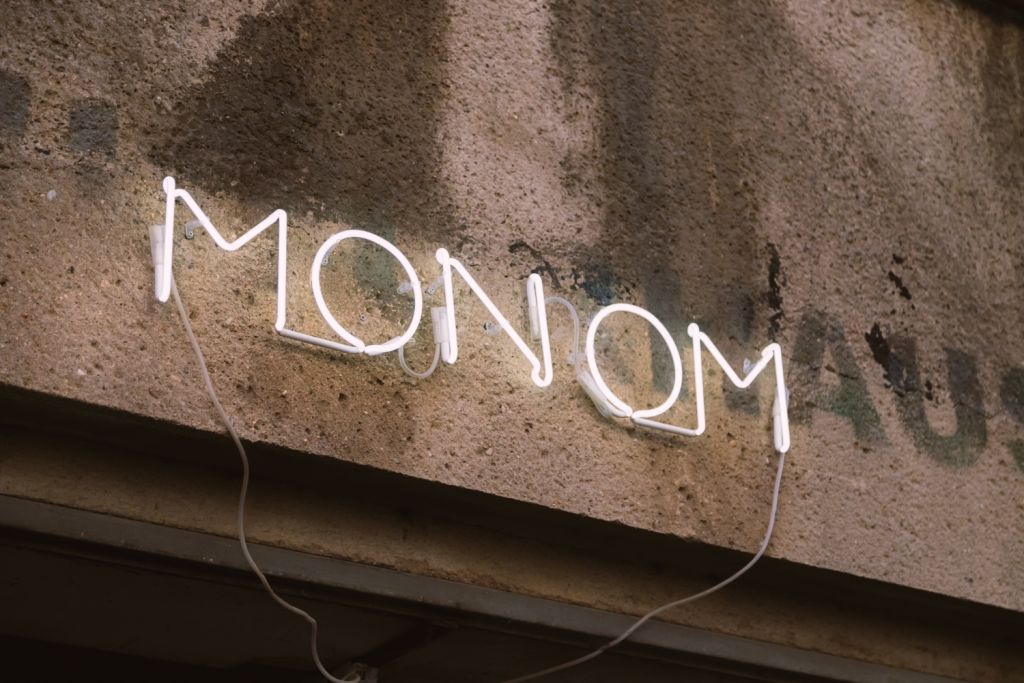
Such a feature of sound as spatiality has helped people to explore and communicate with the external environment since prehistoric times. Hearing, without a doubt, is one of the most subtle ways of perceiving information. And as 4DSOUND creative director John Connell points out in his essay Learning to Listen Again [1], the quality of how we listen underpins our very notion of reality, of our consciousness. It influences every aspect of how we think, feel and communicate.
The act of listening can conjure up entire worlds. All you need is to be attentive and completely immersed in the experience. And spatial sound is just about that. ‘The difference between sound as a medium, and, for instance, text or visual is that you really embody that’, William Russell, spatial sound designer, co-founder and art director of Berlin-based MONOM studio, states. William himself has been in the spatial sound niche for more than five years. Trained as a classical percussionist, he spent some time helping others create live performances in the live music industry. However, at some point, he switched to producing electronics and really got into sound design and sonic environments.
In 2017, along with Gratia Napier and Zak Khutoretsky, aka DVS1, he established MONOM, a unique studio exploring the possibilities of spatial sound as a creative medium. Settled at the historic Funkhaus Berlin, the GDR broadcasting complex from 1956 to 1990, today’s MONOM Studios is a full-fledged sound laboratory whose focus ranges from classic studio tasks, such as track production and licensing, to the creation of immersive performances and cross-disciplinary collaborations. The project team is also working on launching a spatial sound label.
The studio core is a high-tech 4DSOUND system, which combines special hardware and software, and allows composers to set the direction and position of sound in space with incredible accuracy, creating an omnidirectional environment. Simply put, the listener does not feel that the sound is coming from the speakers. 4DSOUND opens up unique possibilities for artistic practices and experimentation, which is one of the main areas the MONOM team focuses on. The studio hosts artist residencies within which musicians and sound professionals are not only taught to deal with 4DSOUND but also to think spatially. Drew McDowall, Rrose, Shifted, Alexi Perälä, Abyss X, Ena and Felix K, and many others presented their works on the MONOM’s site.
The studio’s immediate plans are to work more with storytelling and develop the so-called sonic cinema format, which means the creation of meticulously detailed and realistic virtual worlds. A perfect example of such an experience is William Russell’s Lost Spaces: Rainforest, an audio journey documenting and sharing the beauty of nature and its destruction.
Spatial Festival is another ambitious project on the list that will bring together various disciplines through the common language of spatial sound. Invited artists, with the help of the studio’s team, have created works that will then be presented at the festival. With Spatial, MONOM aims to propose ‘Spatial arts‘ as an emerging artistic movement, one that considers space as a primary compositional element of the artwork.
Like other technologies that evolve with time, (from paintings to photography, from simple video to VR and AR, etc.), spatial sound not only helps us reconnect with the outside world by exploring it in more detail but also to look inwards. ‘Where might our abilities go if we fully refine our listening capacities? What impact could this have on how we build our environments, the interactions we create between us, and our understanding of ourselves as ‘experiencing organisms?’ John Connell asks in Learning to Listen Again. Spatial Festival, like everything else MONOM does, is an attempt to find an answer ‘beyond what we can experience through our senses’.
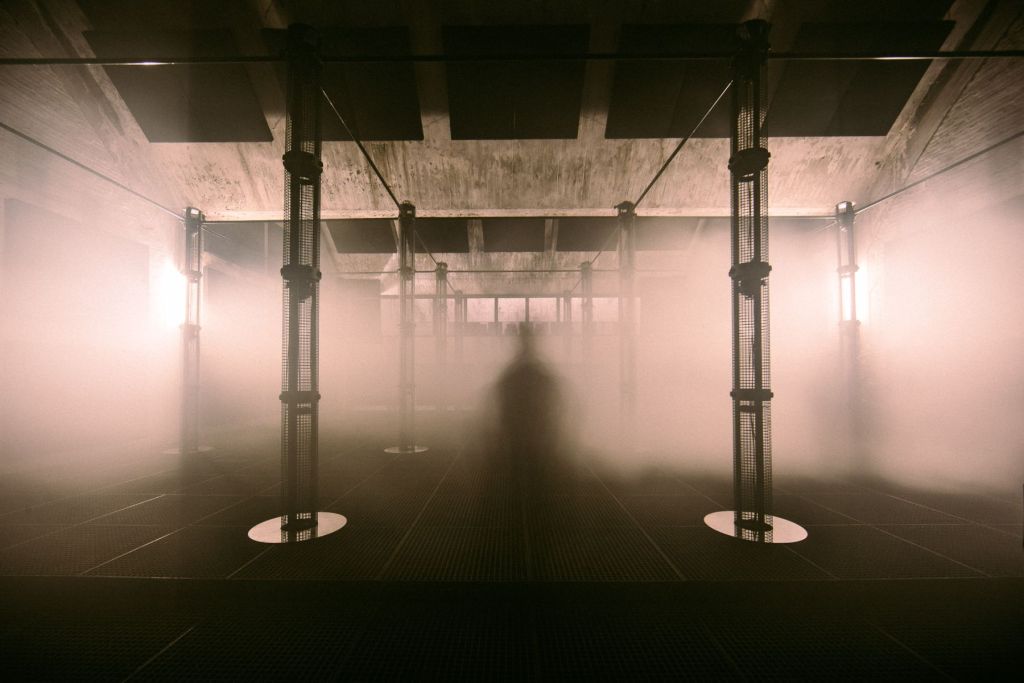
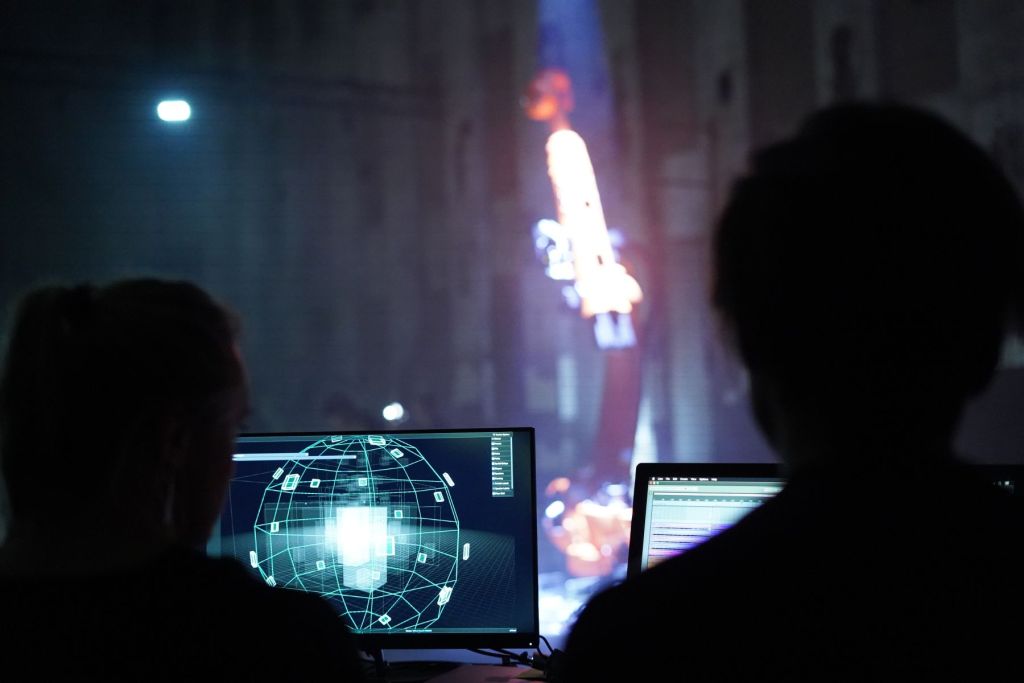
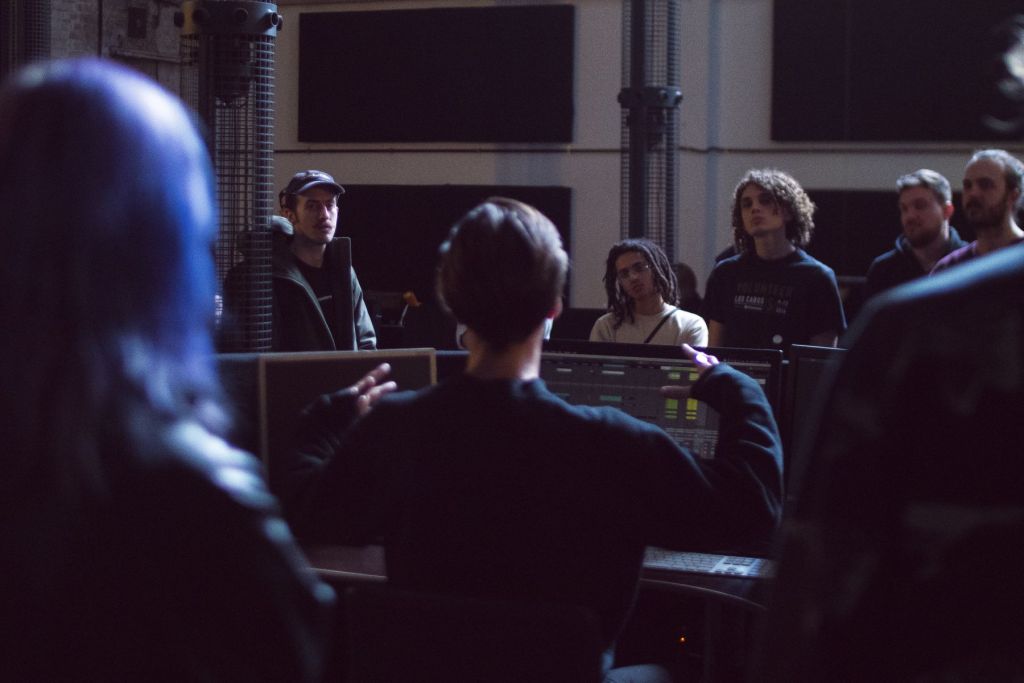
For those unfamiliar with the story behind MONOM development, could you tell us how you position the studio in Berlin’s diverse cultural and musical landscape? And what was the city’s scene like when you just established it? What challenges have you faced in introducing audiences and artists to a new concept of listening and performing music?
It’s hard for me to know the whole scope because the area I’ve been working in for the last five years is very specific. But from what I saw, there were so many cool things going on in Berlin at the time. The scene was very rich. However, I was not aware of any projects that focused purely on spatial sound composition and experience. I felt like that was missing.
Initially, I didn’t come from the position of setting up a venue. I saw Monom as a studio, exploring a new medium and what experimental and expressive possibilities spatial sound technologies can give to artists. At the same time, we were focused on creating a real-life experience, which is not typical for a studio. And we couldn’t really commercialise it beyond our space. I’ve always been trying to find a way to exist without the need for external funding because the ability to sustain ourselves is crucial for the development of this medium. But it was never about making a profit.
So, we started with the typical model, when we paid an artist to come. It was a mix of the live program with residency development. We basically had tickets and a bar. But that didn’t work well, because Berlin is very competitive, and we are off the beaten track doing something brand new. We quickly realised that events cannot support the studio. However, when we do a label or festival, it will bring us revenue because it’s something special, and we can provide our expertise. And that’s what we’re becoming now — we create experiences for different people, labels, and artists. I don’t like the word ‘content’. But this is how we can pretty much say, we’re content and experienced producers, not a venue.
The first demonstration of this new model will be the upcoming Spatial Festival, which will take place from 25 to 27 November. MONOM takes the role of the artist’s partner. We will create pieces together and then share a profit from that. We can now easily take some work and apply it everywhere. And every time it is played, we both get a royalty. This new model allows us not to be tied to corporate sponsorship as well as government funding. From the start, we didn’t want to be a part of this game but to create a new one with the artists.
You said that initially, you didn’t want to open another venue. However, since MONOM was established in 2017, many amazing concerts and performances have taken place on its site. How do you see the last five years in terms of MONOM program development?
It happened really organically that we ended up becoming curators of the space. We just started to invite people we had in mind who was also interested in this new medium. We built a connection with the scene and its more established players, like the CTM Festival. And they’ve also been contributing to MONOM development. But everything started off quite sound-oriented. There were a lot of very experimental, mostly computer-based, electronics in our program, also because of the software itself.
Then I started thinking more about the link between humans and space and that a lot of problems in this world are standing from the lack of empathy and our connection to the environment. I realised that we can use MONOM’s opportunities to expand people’s sense of space and increase empathy as well as awareness by giving them this amazing chance to sit in silence and take an inwards journey and also expand outwards. By silence, I mean a sort of absence of noise that stimulates and sharpens your perception in a very different way.
So we’ve been moving more and more towards sound art to create a pure sound experience that can live on its own. Because it’s actually adding a lot to a listener. When you take away the visual element, it facilitates expansive focus. You finish the piece with your memories, vision, imagination, and emotions. You don’t get this from live audio scenarios when there are a lot of people and visual information around you. In that case, you’re constantly distracted from yourself, either by talking or smoking. That’s not a bad thing at all. It’s just that our culture has too much of it.
What’s interesting is that this new listening paradigm provides a kind of shift in focus from an artist figure to an experience itself. What new perspectives does this open up in terms of creative expression for both artists and listeners?
Well, this is obviously not the original idea to have an art piece separated from its creator. Let’s take, for example, painting, sculpture, or film. These media are not strictly tied to the creator in terms of the work presentation and have very special power because of that. But for the sound experience, this is still unique. It’s very difficult to make a piece that can live on its own and be immersive and interesting enough to allow people to transcend.
Obviously, really amazing sound installations usually involve a very complex set-up. And even if there is a concept above, it’s not the new form. But in MONOM, we have a particular instrument. It’s really about composition. It allows you to compose space intuitively and easily, so the result can be truly special.
You know, there is a difference between an instrument and a tool. A tool is something designed for a specific purpose, and an instrument is about an expression. Whatever you want to express as an artist, you can put through this. That’s why the created experience can live alone. However, an audience will still feel as if inside the artist’s mind or in their world.
What are you focusing on introducing your residents to the exceptional possibilities of 4DSOUND as an instrument for artistic experimentation?
We start by educating them on what a spatial sound is beyond the mainstream context. Because we put forward something completely different. We explain that everything they compose for stereo or any spatial sound system has to be rethought. Sometimes it’s even better to start from scratch. Because to operate with this dimension, you need a completely new framework. I can give one good example. Imagine you want to fade something in and out and raise the volume up and down. In our system, you may take an object that is far away and make it come closer to you, and that means increasing the volume. So, the actual volume isn’t changing, only your perception.
4DSOUND is a way to access every parameter you can imagine of how sound interacts in space. We basically train the artists in the instrument because that’s the best way to show them what they are dealing with. We also pay attention to acoustic and physical principles of sound: doppler effect, gravity, etc.
The most amazing thing is that we are dealing with a real ‘space synthesiser’. The software was developed to create a truly realistic and accurate environment. We play different pieces for our residents, showing them the diversity of what we do. We are not genre or media-specific; we’re just interested in how spatial sound can add another dimension to any artistic practice as well as live on its own.
Now it’s also possible to take the software home and work on a computer with headphones. This is a very new feature. It’s not as advanced as the IRL experience, but artists can use this opportunity to sketch ideas. So then, when they bring them to MONOM, we can see if something works or not. And it literally saves us 80% of the time, making things much more sustainable. We expect artists’ projects to get more interesting in the next few years. This is how it works with any instrument. The more you use it, the more you can express it through it.
The relationship between music and other art forms is becoming more and more important — the focus has shifted from multidisciplinary concepts/projects to cross-disciplinary ones. How do you see and explore this approach in MONOM?
Through the last five years, I’ve realised how this instrument, a new medium, can glue together various disciplines and connect many different artists. This cross-disciplinary approach is very much built into its DNA. It’s designed in the software language C++ which makes it perfect for connecting to almost all other mediums and interfaces.
At the end of last year, we got the new software version, which is 100 times faster and has way more features than the previous one. And this is when we really become able to interact with other mediums. We’re very excited because it allows us to make really complex environments in real-time and connect them to motion capture, VR, AR, diametric, and everything you could imagine.
What I find really exciting is that companies have been spending billions to create all these tools for gaming that now we can connect and interface with the system. You can control sound through gaming engines like Unity or Unreal. If you dropped a ball in the virtual world, it would bounce around the room. Now you can link this ball to the white noise object, and it will bounce around the MONOM space if dropped. And not in headphones, but in a real environment. Such technological advances allow us to link things together in a meaningful way. And now we’re pretty much taking a cross-disciplinary approach, as these tools open up completely new modes of composition that are actually very human because they link directly to physics and our bodies.
We’re also thinking about setting up more studios with different focuses — VR/AR, dance, etc. By combining collective knowledge, it will be possible to create a truly new cross-disciplinary experience. It always feels very exciting to explore the unknown.
Let’s talk about the upcoming festival. The program you announced is very robust and also cross-disciplinary. As stated in press materials, MONOM is looking to create a multi-sensory experience within it. Can you elaborate a bit more on that?
For the first edition, we decided to present a concept that is more focused on spatial sound itself. 80% of current programs are dedicated to the pure sonic experience. All other senses will be explored in more detail in future editions. Although there will be a very interesting audio-visual experience this time.
The long-term vision is that Spatial will become a platform for showcasing and exploring how spatial sound connects to different mediums, disciplines and art forms. This idea of multisensory is about showing how much can be experienced when you think spatially. Essentially, when it comes to sound, mono or not, you’re still dealing with room acoustics. It’s like a painting in a gallery where silence must be observed. The fact that you’re not allowed to talk in a museum is also part of the spatial sound experience.
Could you tell us more about Sonic Cinema as one of the new forms that 4DSOUND technology brings to life? And how does MONOM become a platform for storytelling?
Sonic cinema essentially was our framework to explore the possibilities of spatial sound for storytelling and storytellers. While working in MONOM, I started to create very realistic environments. It feels really fascinating just sitting in space and being able to transfer people to different places. I thought how perfect it was for creating a narrative. Storytelling is a lot about engaging our emotions. And this [spatial sound technology] is an essential communication tool that can evoke a strong emotional response.
I had quite a difficult time when making the first sonic film. I was depressed and debilitated by climate crises and the destruction of nature. I collected sounds of extinct animals and created this sort of virtual world that was inhabited. The piece itself explores the beauty and destruction of nature. I’m not a writer, and I was really didactic while creating it. The idea was very basic so that each person in the space would become a protagonist and go through the experience himself. You’re moving from the city to the jungle and find yourself in the night forest. Then the day comes, and you wake up and realise that a storm is raging in the forest. Essentially the rainforest is destroyed, and you end up in the desert. It turned out to be very intense and confronting work, a real journey.
This is the example we have right now within the sonic cinema program. We had two other pieces that would also fit into it, and there is an idea to launch the sonic cinema residency next year. We can invite people from the storytelling area to come up with ideas for films. Of course, we will also need to work out the methodology, since this is a fairly new form. It’s much different from creating just a sound piece. You have to be involved in every part of your project because there is an exact message to communicate and a story to tell, which requires more precision. And every moment should be painstakingly crafted.
We work on a lot of projects focused on climate. For us, the sonic cinema program, as well as Spatial Festival, is also an opportunity to bring people in and give them access to experiences that can really change their minds. Or should I say hearts?! I think that many issues in our society stand from disconnection, rationalisation, and intellectualisation. But then there is a big difference between intellectual and intelligent. Intellectuality is very much of the mind, while intelligence is more of the body and heart. And what sound can do is put you into this state of openness, because you really embody it. Also, listening is an active experience.
MONOM works and provides sound experiences not only at its permanent home in Funkhaus but also actively collaborates with various cultural projects off-site. What challenges do you face when presenting the 4DSOUND programming in third-party locations? To what extent is it possible to democratise and spread such advanced technology?
Now we’re quite experienced with touring and setting up the system in different locations. And the only issues we have working off-site are external noise and these sorts of things. So, the biggest challenge is educating our partners that this experience is not created for a room with 1000 people talking. It’s as if you were in a forest and you couldn’t enjoy it, because there would be a noisy crowd hanging around. But when you take all the voices away and stay alone with nature, you hear into the distance, maybe a kilometre away or even longer. And that expansiveness is also what we are trying to offer. The system itself was designed to go into a space. And it doesn’t compete with a room by creating the issues that are common for a directional system, like, for instance, standing waves, etc. It still can be very loud, but it’s much more precise.
As for the democratisation of this technology, I feel a strong interest in such a different experience. And since we can now compose using this tool, more established artists are getting involved. As a result, people begin to perceive the new medium as a legitimate form. And once they start seeing it as a legitimate form, the rest is easy.
We can already licence our works for other sound systems. Whether it’s quadraphonic or 100 speakers, it’s possible to convert what we do to this. But of course, this will never be the ultimate experience we make with our unique system and setup. We can also add our system to any other, for example, to the sound in a club, in which case it is used more as an additional element. But, again, if there is a piece we built from scratch and spent our time on, then you better play it in the same environment we have in MONOM. Otherwise, it will be like watching a film on a laptop — still can be interesting but not the full cinema experience.
What’s your chief enemy of creativity?
I’d say lack of time and space to just be, not to work creatively but just to do nothing.
You couldn’t live without…
Collaborations. I most enjoy working with others and helping them to realise their vision.






